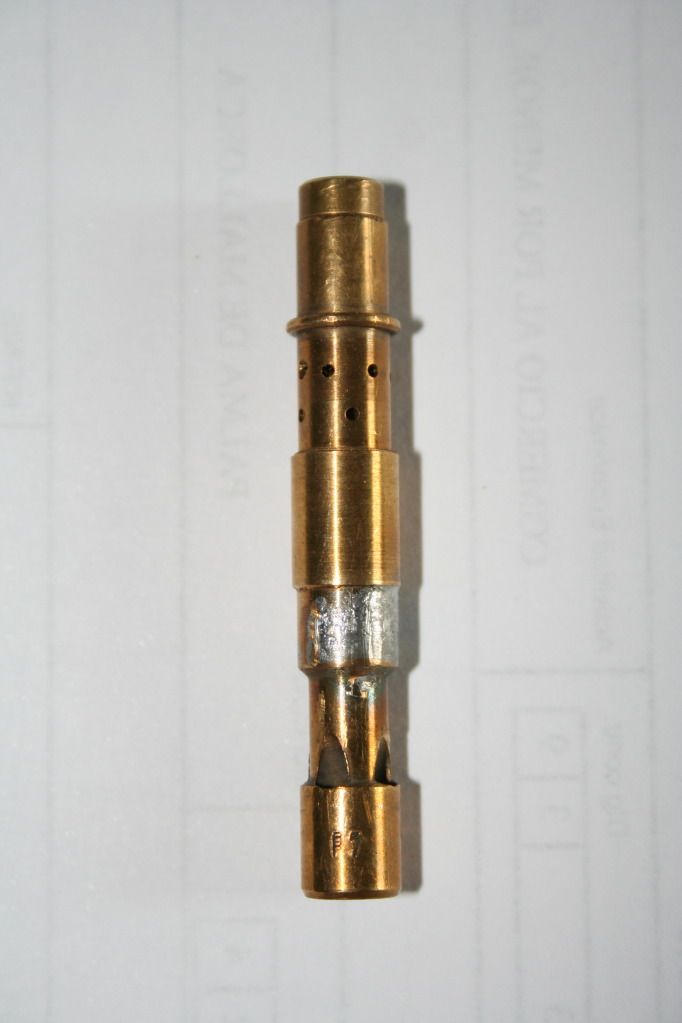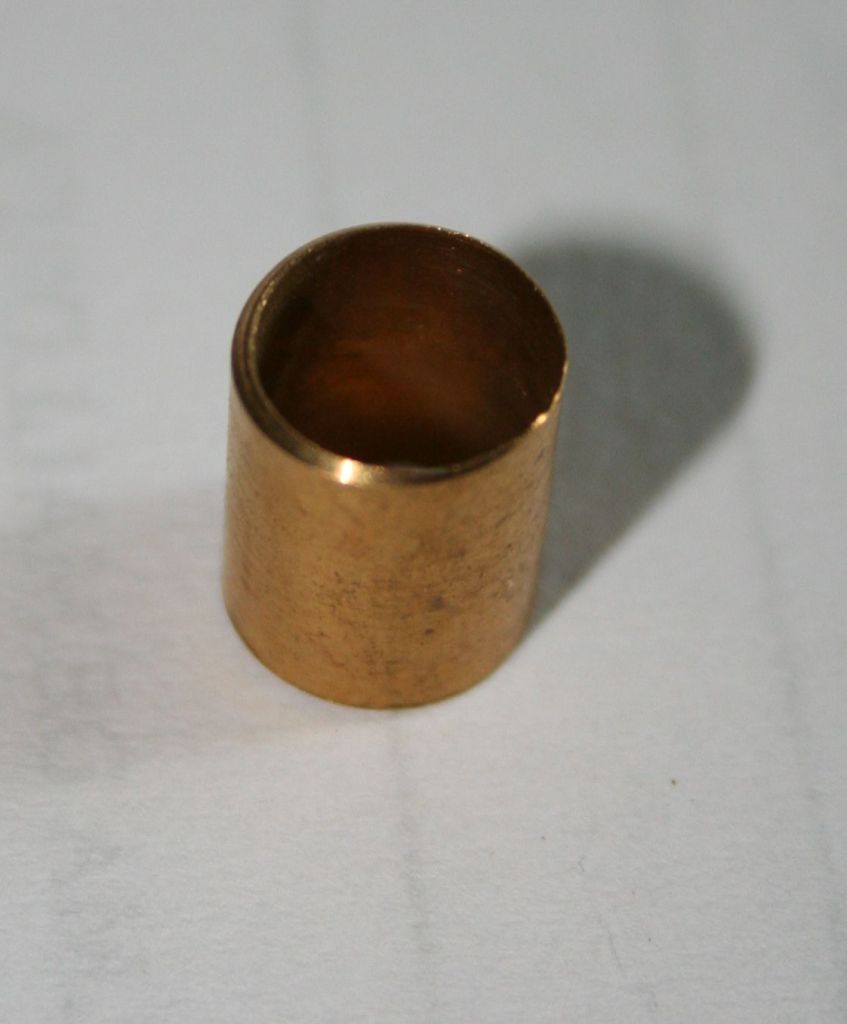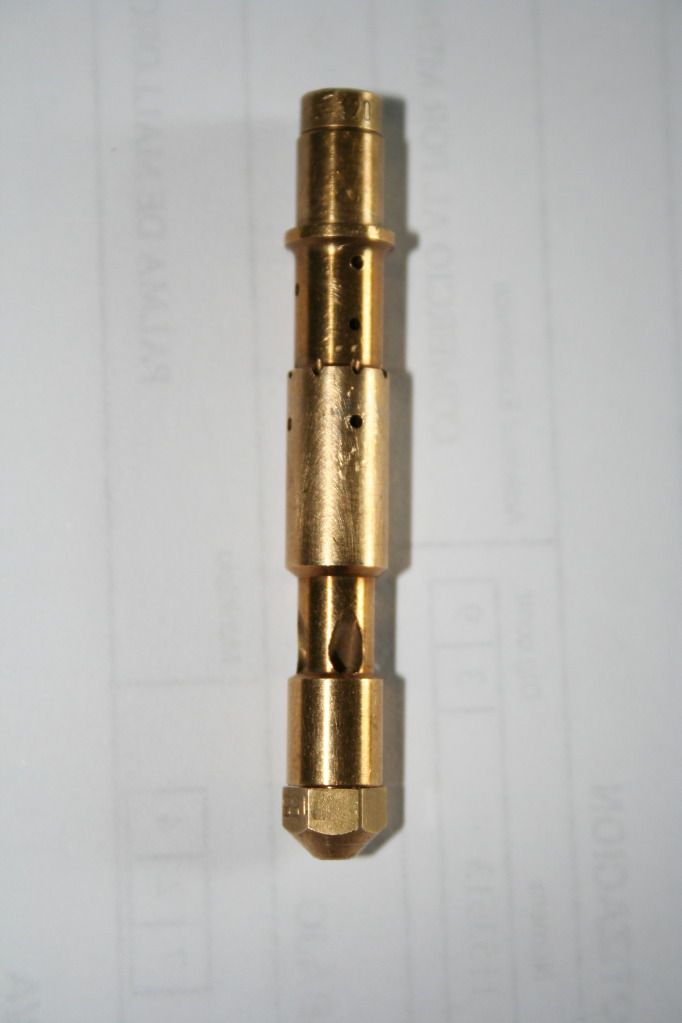 
 Main Menu
Main Menu
|
 Nevada Classics
Nevada Classics
|
 Advertise at CC
Advertise at CC
|
| S |
M |
T |
W |
T |
F |
S |
| |
1 |
2 |
3 |
4 |
5 |
6 |
| 7 |
8 |
9 |
10 |
11 |
12 |
13 |
| 14 |
15 |
16 |
17 |
18 |
19 |
20 |
| 21 |
22 |
23 |
24 |
25 |
26 |
27 |
| 28 |
29 |
30 |
31 |
|
|
|
|
 CC Advertisers
CC Advertisers
|
|
 5Likes 5Likes

09-21-2011, 01:20 AM
|
 |
CC Member

|
|
|
Join Date: Jun 2003
Location: Palma de Mallorca, Spain,
ESP
Cobra Make, Engine: Contemporary with 482 KC/SO, TKO600,IRS Jag/AMP, 3.54 Salisbury PL,
Posts: 582
|
|

 Not Ranked
Not Ranked
 My Webers now almost perfectly jetted
My Webers now almost perfectly jetted
I have been fine tuning my webers, especially trying to lean out the whole thing, because it was smelling too much of gas and using a lot of it..
Large main jets and idel jets are fine and make things run, because they mask any other deficiencies in the choice of air jets.
I went to smaller jets , 55 idle and 145 main and worked myself up from there.
At idle the A/F ratio came down to 13.5 on idle, but went very lean when starting to move.
So I removed the 120 idle air jet and went to a 100, which improved things a lot. I subsequently installed a self made 80 ( drilled out a 60 idle holder) idle holder air and things got in line quite well.
I noticed a slight lean hole when accelerating, so decided to open the pump Jets up from 50 to 60.Good result.
The main jets at 145 were a little too rich and power and acceleration was slightly hampered, at 13.5 to 14 A/F ratio. Since I wanted to achieve a A/F ratio of 12.8, which is for maximum power I installed a 155 main jet. The air jet is 120 and maintains the 12.8 ratio up to max rev , that is 6200 rpm.
The whole thing is slightly on the rich side, but I just thing that it has to be like that to make these engines run to its best.
Definitely Webers give these engines the crisp and inmediate response other carburetors donít. I always had problems with Holleys sputtering when taking fast corners or when breaking hard (killing the engine in the process). Whit the Webers this is now an absolute race engine, with incredible torque and reving capabilities ( I have an aluminum flywheel) and a sound to make you absolutely happy.
I have a friend who is a Rally champion here in the Balearics( with Ford Cosworths and the like), and who had a chance to drive in McLaren F1 and several top Ferrari models. He said that the sensation of brute power and of blood draining acceleration he had in my Cobra topped anything he had driven before.
If you snap the gas pedal open from 1500-2000 rpm , first you go sideways, the back trying to overtake the front by the right side. You correct for that and there you go off like a rocket.
Fantastic sensation. You better have some good driving experience doing that or you can destroy yourself.
Anyway, my concept of supercars has changed a lot. For sheer fun I only need my Weber equipped Cobra, nothing else.            
__________________
Nothing sounds better than a Cobra in a Tunnel !
|

09-21-2011, 06:34 AM
|
 |
CC Member

|
|
|
Join Date: Sep 2009
Location: Dallas,
tx
Cobra Make, Engine: FFR track car, SL-C track car
Posts: 1,262
|
|

 Not Ranked
Not Ranked
Good update. Sounds like you got it dialed in pretty good! 
Can you elaborate on your setup to read your A/F ratio's? |

09-25-2011, 06:24 AM
|
 |
CC Member

|
|
|
Join Date: Jun 2003
Location: Palma de Mallorca, Spain,
ESP
Cobra Make, Engine: Contemporary with 482 KC/SO, TKO600,IRS Jag/AMP, 3.54 Salisbury PL,
Posts: 582
|
|

 Not Ranked
Not Ranked
I have a wideband Lambda sensor with a bung installed in the left exhaust pipe, where the four headers meet the exhaust. An Innovative LM-2 A/F ratio meter gives me the readings. I read the A/F ratios while driving the car.
__________________
Nothing sounds better than a Cobra in a Tunnel !
|

11-19-2011, 03:12 AM
|
 |
CC Member

|
|
|
Join Date: Jun 2003
Location: Palma de Mallorca, Spain,
ESP
Cobra Make, Engine: Contemporary with 482 KC/SO, TKO600,IRS Jag/AMP, 3.54 Salisbury PL,
Posts: 582
|
|

 Not Ranked
Not Ranked
As you probably know from my other thread my Weber experiments have come to a sudden halt.
The crankshaft could not bear the enormous torsion forces of the snap action acceleration combined with a light flywheel. It broke in half and exploded part of the block.
Yes, the eagle crankshaft has broken just before the second bearing cap at the front and has taken the Pond aluminum block with it, so the engine is now for a general rebuild, well , rather a general replacement.
Will probably go with a new but cast iron block and will try to get a better crankshaft, forged or billet. The steel eagle crankshafts seem to break elswhere also, I have seen other broken ones in the web.
So I am very sad  , but one thing can positively be said about the Webers. They made my engine behave at its best. My last settings were probably the best ones I managed to achieve. Can't wait to have the engine back together and enjoy the brutal response the Webers transmit  .
__________________
Nothing sounds better than a Cobra in a Tunnel !
|

09-21-2011, 06:22 AM
|
|
CC Member

|
|
|
Join Date: Feb 2004
Location: Outside Miami,
FL
Cobra Make, Engine: Several
Posts: 949
|
|

 Not Ranked
Not Ranked

My commendation on your patience and success. It is true that when set up correct, NOTHING is better "feeling" than the Webers compared to any Holly (though i have absolutely NO experience with their fuel injection units.)
When i moved from Weber-equipped Cobras to Weber-equipped FA/5000 (all Chevys), the crispness of a proper set-up was similar. However, it must be said that a poor Weber tune is also one of the most awful experiences, nearly always rich or very lean in a few spots (ergo the common spitting back through the intake, while stinking of excess fuel). You have to admire the Italian style and patience with making Ferraris run correctly and with fairly reasonable fuel economy. Though, mind you, their engines are generally very small displacement per cylinder and the smaller venturi systems seemed to be better metering in the day then our carbs(that is, maintaining correct fuel/air ratios with better precision when warm. Even the street cars, however, were cold-blooded beasties, needing warm manifolds and warm gear-boxes to run correctly. But, when warm, they were simply fine to drive and hear.
The only better system i have ever driven has been the Lucas/Kinsler mechanical injector systems that were common on the large Can-Am cars. Jim Kinsler, Bless his soul, knows how to design, assemble and tune those systems to a fare-thee-well, just about perfect.
The Lucas system uses a shuttle-cock moving back and forth over a changing-length tube to vary the amount of each fuel charge rather precisely. Injecting the fuel from the top of the big intake tubes (often referred to as Calliope tubes) allows the air-fuel mixture to be quite homogenized by the time it gets to the intake port. Once the manifold is warm very little fuel "wetting" occurs, with little corner edges to pass via a long straight shot. With such large openings and long lengths very little drag exists, while plenty of mass-momentum is available.
The Lucas absolute free-flow rate available is far over 4000 cfm, but of course is far in excess of even the biggest road-race Chevy. But, with the precision charge of the mechanical shuttle-cock, completely the opposite of the older constant-dribble Hilborn systems, the engine tolerates wide-open-throttle demands even at medium rpms with ease.
The net result is a wonderful flat torque curve AND a very high peak power, all the way from 2500 to over 7500 rpms. For road racing, this is ideal. If you miss a shift and skip a notch on the way up (not an unknown error?), the engine will still pull like a freight train and very little time will be lost.
The only drawback is the very tall pipe configuration, not welcome under any hood, but ideal for mid-engine layouts. You have to admit, having those huge pipes sticking up in the back is very appealing eye-candy, no? (See red car picture in file)
Oh yes, another drawback is a current new system is around 20K USD. Plus, depending.
Again, my compliments for your set-up.
PS: Lately, i have been thinking that one of the newest Holly Dominator systems with a tall hand-fabricated intake manifold, might be able to replace the old Lucas, but would have to test it properly, far beyond my current retirement planning. Lots cheaper, though and far better metering (accuracy in F/A ratio) than in the past. Holly has done a lot on this and i would love to try one.
__________________
"A free people ought not only to be armed and disciplined but they should have sufficient arms and ammunition to maintain a status of independence from any who might attempt to abuse them, which would include their own government."
George Washington
Last edited by What'saCobra?; 09-21-2011 at 06:34 AM..
Reason: PS and sp
|

11-19-2011, 11:25 AM
|
 |
CC Member

|
|
|
Join Date: May 2001
Location: California,
Ca
Cobra Make, Engine: NAF 289 Slabside Early Comp Car with 289 Webers and all the goodies. Cancelling the efforts of several Priuses
Posts: 6,592
|
|

 Not Ranked
Not Ranked
Eljaro: I totally agree
Quote:
|
They made my engine behave at its best.
|
From my perspective the transformation when the Webers were added were far above my expectation. The increase in the torque is what impressed me the most. I'd love to be able to have 13:1 compression too!!!!.
__________________
Rick
As you slide down the Banister of Life, may the splinters never be pointing the wrong way 
|

11-19-2011, 12:54 PM
|
 |
CC Member

|
|
|
Join Date: Sep 2006
Location: Skjetten,
No
Cobra Make, Engine: Unfortunataly ; none
Posts: 333
|
|

 Not Ranked
Not Ranked
Sorry to hear that, Eljaro.
But it sounds as you are still happy about finding that Weber jetting suiting the engine well!
I had to get a new rod and the crank reground this fall, just to show that you're not alone in the rebuilding league.
Did you use a Eagle forged 4340 crank, or the cast type (hopefully cast, or else there will be very little good to say about those eagle forged cranks... and I use one myself!)
I cannot say anything about Webers VS other induction setups because I've had Webers since the first day I ran a V8!
G'night
RS
|

11-19-2011, 05:10 PM
|
 |
CC Member

|
|
|
Join Date: Jun 2003
Location: Palma de Mallorca, Spain,
ESP
Cobra Make, Engine: Contemporary with 482 KC/SO, TKO600,IRS Jag/AMP, 3.54 Salisbury PL,
Posts: 582
|
|

 Not Ranked
Not Ranked
Quote:
Originally Posted by Caprimaniac

Sorry to hear that, Eljaro.
Did you use a Eagle forged 4340 crank, or the cast type (hopefully cast, or else there will be very little good to say about those eagle forged cranks... and I use one myself!)
G'night
RS
|
It was a cast crank. That is what Keith put into the pond block.
I will choose a forged crank for the new engine, and will also go for an iron block instead of an aluminum one.
My aluminum block just burst apart. I come to believe that an iron block is more rigid than an aluminum one and will hold up better.
I do not know if the aluminum block has some influence in the breaking of the crank. Makes me think 
__________________
Nothing sounds better than a Cobra in a Tunnel !
|

07-08-2012, 11:45 AM
|
 |
CC Member

|
|
|
Join Date: Jun 2003
Location: Palma de Mallorca, Spain,
ESP
Cobra Make, Engine: Contemporary with 482 KC/SO, TKO600,IRS Jag/AMP, 3.54 Salisbury PL,
Posts: 582
|
|

 Not Ranked
Not Ranked

I had Cobrafan1 asking a few questions about my latest Weber setup and I want to share these with all of you.
One emulsion tube I had been using was a modified F7 tube, with a self made sleeeve covering the lower holes and making the middle ones aireate the fuel further up, since the air bubbles would go up between the emulsion tube and the sleeve and come out at the top of the sleeve (tested this in a glass of water blowing air into the top) I also drilled 8 new holes at the very top and 4 holes below in order to lean out the lower midrange.


Since I have always been testing other emulsion tubes to find the absolute best here is the one I was using when the crankshaft broke. It is a F11 tube with two extra holes at the top. Worked well also, but I was not able to go back to the modified F7 E-tube to make comparisons. The crank is broken for now.

And I can warn that if you have well set up Webers, a light flywheel and a not so good crankshaft, the Webers will twist that crank to death. Happened to me. Stay away from eagle cast.
__________________
Nothing sounds better than a Cobra in a Tunnel !
|

06-16-2013, 05:37 PM
|
 |
CC Member

|
|
|
Join Date: Jun 2003
Location: Palma de Mallorca, Spain,
ESP
Cobra Make, Engine: Contemporary with 482 KC/SO, TKO600,IRS Jag/AMP, 3.54 Salisbury PL,
Posts: 582
|
|

 Not Ranked
Not Ranked
Latest tuning done to my webers.
After installing a wider hood scoop to make more space for the air horns, I did not make a new wider scoop cover, so had again the hesitation at mid throttle. Installed a cover and the hesitation is gone.
I was shooting out black smoke on acceleration, so installed a .35 bypass and the black smoke is much reduced, so will need to go to a .50 bypass.
A slight bog came up when using the bypass, so installed a larger idle jet, .65 before, .75 now, and the bog is gone. Idle air is 120, idle screw 1 turn out.
Installing the bypass has another positive side to it.
Apparently the fuel trapped in the pump circuit drains now into the fuel bowl and so does not drip into the throats when I stop the engine and the carbs soak up heat.
No more fuel dripping since the bypass installation.
Engine runs great, no weak spot anywhere.
__________________
Nothing sounds better than a Cobra in a Tunnel !
|

06-18-2013, 07:34 AM
|
|
CC Member

|
|
|
Join Date: Mar 2004
Cobra Make, Engine: spf 2112 *427 stroker windsor
Posts: 333
|
|

 Not Ranked
Not Ranked
Hello Eljaro
Good to see you running again
|

06-18-2013, 07:45 AM
|
 |
CC Member

|
|
|
Join Date: Jun 2003
Location: Palma de Mallorca, Spain,
ESP
Cobra Make, Engine: Contemporary with 482 KC/SO, TKO600,IRS Jag/AMP, 3.54 Salisbury PL,
Posts: 582
|
|

 Not Ranked
Not Ranked
Carmine,
followed your tip on the idle jet when going with a pump bypass and it works. Will have see if the .50 bypass will do without a bog or if it needs a larger idle jet. Larger idle jet makes low speed action smoother and A/F meter does not show richer than before, rather leaner.
__________________
Nothing sounds better than a Cobra in a Tunnel !
|

06-18-2013, 08:16 AM
|
|
CC Member

|
|
|
Join Date: Mar 2004
Cobra Make, Engine: spf 2112 *427 stroker windsor
Posts: 333
|
|

 Not Ranked
Not Ranked
Good to here it worked for you so far
The extra idle fuel and idle air will also make your engine run cooler temps
Best regards
Carmine
|

06-18-2013, 11:39 AM
|
 |
CC Member

|
|
|
Join Date: Sep 2009
Location: Dallas,
tx
Cobra Make, Engine: FFR track car, SL-C track car
Posts: 1,262
|
|

 Not Ranked
Not Ranked
Quote:
Originally Posted by Eljaro

I was shooting out black smoke on acceleration, so installed a .35 bypass
No more fuel dripping since the bypass installation.
|
Glad to hear you are back in action. I'm not familiar with the bypass, can you elaborate on that?
Thanks,
John |

06-18-2013, 09:13 PM
|
 |
CC Member

|
|
|
Join Date: Jun 2003
Location: Palma de Mallorca, Spain,
ESP
Cobra Make, Engine: Contemporary with 482 KC/SO, TKO600,IRS Jag/AMP, 3.54 Salisbury PL,
Posts: 582
|
|

 Not Ranked
Not Ranked

I found this explanation in Understanding a Weber Side Draft Carburetor Through a Fictional Supposition.. Forum memeber BLUE explains it better than I could possibly do:
1. The Bleed-Back/Spill jet sits at the bottom of the fuel bowl.
2. When the throttle valve is closed (idle), fuel enters the bleed-back valve, flows past the ball bearing valve and fills the pump chamber as the rod is pushing the piston is up high in the pump chamber and the spring compressed. Weights atop the two other ball bearing valves keep them closed and prevents fuel from flowing out of the two jets.
3. When the throttle is opened quickly, the rod drops and the spring pushes the piston down. This forces fuel backwards. The ball bearing in the spill jet is forced upward and closes this valve preventing fuel from back flowing into the fuel bowl. The pressure also lifts the other two ball bearings and corresponding weights (opening these valves) and allows the squirt of fuel to shoot out each pump jet.
4. The diameter of the pump jet holes, the length of the piston's excursion, and the spring tension affect how much fuel is squirt and the time duration of the squirt.
5. When the throttle is opened slowly, the rod also drops but the fuel squirts slowly back into the fuel bowl as the ball bearing valve in the bleed-back/spill valve is designed to "bleed" on slow throttle transitions. In fact the progression circuit is designed to be the key supplier of fuel during slow throttle transitions...however some fuel will inevitably go through the pump jets. Size of the bleed back valves, accelerator ball bearing weights and piston spring pressure are the key factors in how "leaky" the pump jets are in slow to medium transitions and also can be customized for normal fast transition squirts.
My explanation for the carbs not dropping fuel into the throats when engines is turned off is:
When engine is turned off and heat up the carbs the fuel in the pump circuit expands slowly and drains into the bowl instead of dripping into the carb throats.
__________________
Nothing sounds better than a Cobra in a Tunnel !
|

06-19-2013, 01:10 AM
|
 |
CC Member

|
|
|
Join Date: May 2008
Location: Brisbane,
QLD
Cobra Make, Engine:
Posts: 2,797
|
|

 Not Ranked
Not Ranked
I'll add a little more.
At ANY throttle opening (steady throttle), the inlet valve is open. The ball to be has forced up on it's seat from fuel pressure within the pump cavity.
The compressed piston spring determines pump pressure. Pump rod length, pump jets and bypass orifice size determine duration of shot.
The inlet valve can have no bypass 00, or 0.35, 0.50, 0.60 etc.
The inlet valve can also have a steel or plastic inlet ball. The plastic ball seats faster because it is lighter.
All other circuits of the carb should be optimised on their own with no input from the pump circuit. Then and only then should the acceleration circuit be addressed.
As can be seen on Eljaro's car as example, the pump circuit can be backed off, there is seldom need for a closed bypass.
__________________
Gary
Gold Certified Holden Technician
Last edited by Gaz64; 06-19-2013 at 01:38 AM..
|

06-19-2013, 06:57 AM
|
|
CC Member

|
|
|
Join Date: Dec 2009
Location: Wake Forest,
NC
Cobra Make, Engine: FF 302 cam,balanced,48 IDA Webers
Posts: 53
|
|

 Not Ranked
Not Ranked
Hi, Dallas asked a question that I am also interested in- What does this by-pass circuit plumbing look like exactly. Does it help take away some of the fuel boil after shut down running a mechanical fuel pump? I'm trying to solve this problem and solutions address an electrical pump- cut the switch just before stopping???? Thanks, Jon
|

06-19-2013, 11:47 AM
|
|
CC Member

|
|
|
Join Date: Dec 2009
Location: Wake Forest,
NC
Cobra Make, Engine: FF 302 cam,balanced,48 IDA Webers
Posts: 53
|
|

 Not Ranked
Not Ranked
I'm new to this whole tuning and get very confused by the multiple names used for parts-e.g. the brass valve at the bottom of the float bowl on a 48IDA is the pump exhaust valve (that's from the Weber exploded image I have). I think it get called a bypass valve by its action. To call it other things hurts my head.
Eljaro, You really must write a book. I'd be the first in line to buy a copy. Regards, Jon
|

06-19-2013, 01:50 PM
|
 |
CC Member

|
|
|
Join Date: May 2008
Location: Brisbane,
QLD
Cobra Make, Engine:
Posts: 2,797
|
|

 Not Ranked
Not Ranked
The "pump exhaust valve" is really a two way valve.
It allows fuel to enter the pump cylinder, hence "inlet valve" but as the pump operates, fuel will return to the float bowl until the inlet ball seats, hence "exhaust valve" even as a "00" valve.
A valve with a 0.35mm, 0.50 orifice on it's side bypasses fuel back to the bowl while the ball is seated.
A light spring with a closed "00" exhaust and 40 pump nozzles would give a long duration pump squirt.
A heavy spring with a "60" exhaust and 80 nozzles gives a short sharp squirt. Both extreme examples.
DCD, DCOE, IDF, and IDA all run this valve at the bottom of the float bowl.
The float on an IDA has to be removed to change the valve.
The valve is easier to change on the other carbs because the float comes out with the float lid, (airhorn).
__________________
Gary
Gold Certified Holden Technician
|

07-30-2013, 08:48 PM
|
 |
CC Member

|
|
|
Join Date: May 2006
Location: Manchester,
MO
Cobra Make, Engine: Hurricane - FE
Posts: 627
|
|

 Not Ranked
Not Ranked
 Confused
Confused
Eljaro
Trying to decipher all your work and not sure where you ended up with final settings. Are the e-tubes F7, F11 or modified F11?
Did you update post #1 and is that the various components you are now running or is it what you started with?
If it is not the current ones, would you mind reposting
Starting my journey down the Weber highway.
Thanks
Paul
|
 Posting Rules
Posting Rules
|
You may not post new threads
You may not post replies
You may not post attachments
You may not edit your posts
HTML code is Off
|
|
|
All times are GMT -7. The time now is 03:19 PM.
Links monetized by VigLink
|


